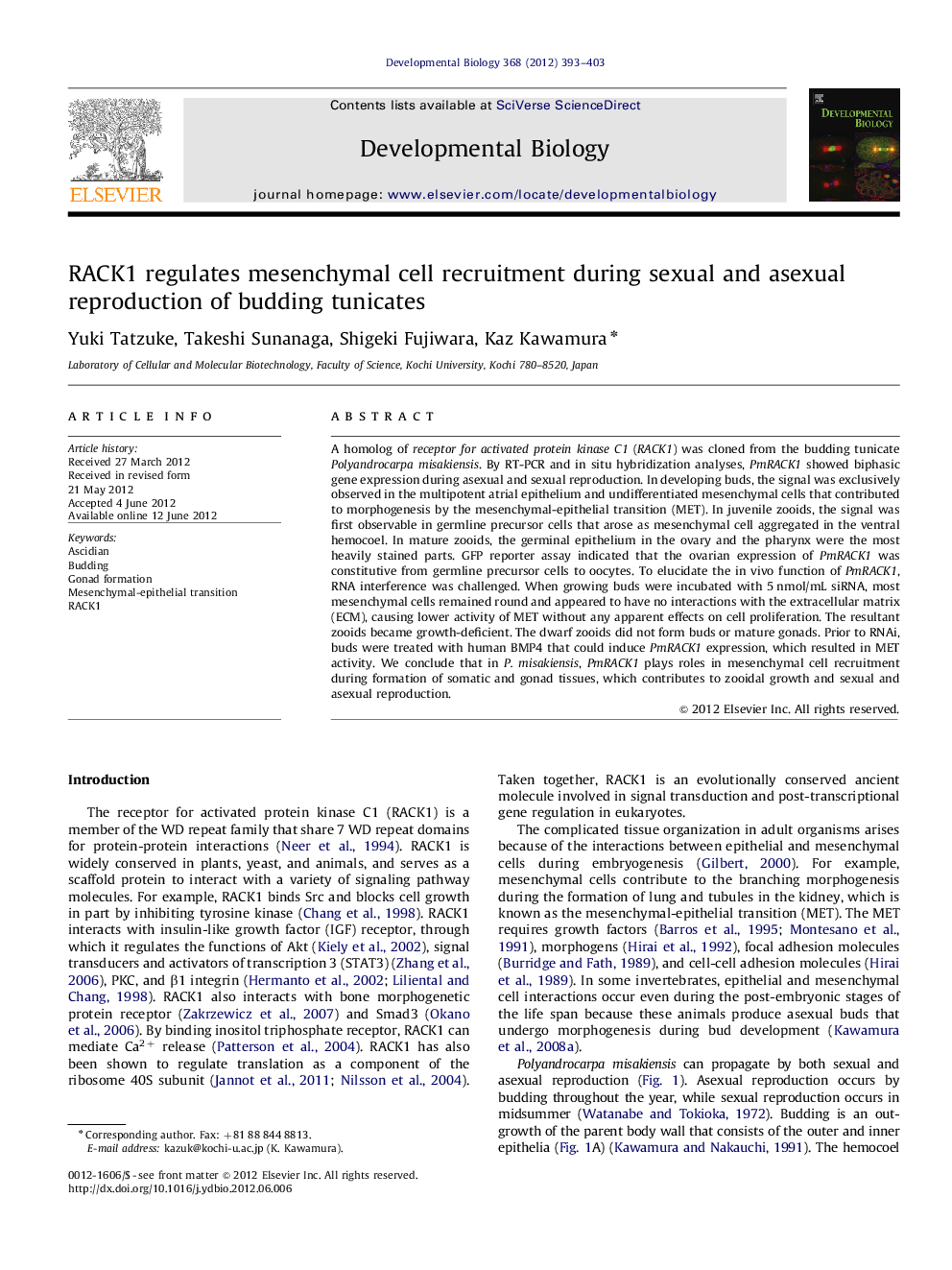| Article ID | Journal | Published Year | Pages | File Type |
|---|---|---|---|---|
| 2173381 | Developmental Biology | 2012 | 11 Pages |
A homolog of receptor for activated protein kinase C1 (RACK1) was cloned from the budding tunicate Polyandrocarpa misakiensis. By RT-PCR and in situ hybridization analyses, PmRACK1 showed biphasic gene expression during asexual and sexual reproduction. In developing buds, the signal was exclusively observed in the multipotent atrial epithelium and undifferentiated mesenchymal cells that contributed to morphogenesis by the mesenchymal-epithelial transition (MET). In juvenile zooids, the signal was first observable in germline precursor cells that arose as mesenchymal cell aggregated in the ventral hemocoel. In mature zooids, the germinal epithelium in the ovary and the pharynx were the most heavily stained parts. GFP reporter assay indicated that the ovarian expression of PmRACK1 was constitutive from germline precursor cells to oocytes. To elucidate the in vivo function of PmRACK1, RNA interference was challenged. When growing buds were incubated with 5 nmol/mL siRNA, most mesenchymal cells remained round and appeared to have no interactions with the extracellular matrix (ECM), causing lower activity of MET without any apparent effects on cell proliferation. The resultant zooids became growth-deficient. The dwarf zooids did not form buds or mature gonads. Prior to RNAi, buds were treated with human BMP4 that could induce PmRACK1 expression, which resulted in MET activity. We conclude that in P. misakiensis, PmRACK1 plays roles in mesenchymal cell recruitment during formation of somatic and gonad tissues, which contributes to zooidal growth and sexual and asexual reproduction.
Graphical abstractFigure optionsDownload full-size imageDownload high-quality image (138 K)Download as PowerPoint slideHighlights► RACK1 in the tunicate, Polyandrocarpa misakiensis, shows biphasic gene expression during budding and gonad formation. ► RNAi of PmRACK1 causes growth deficiencies in which zooids form no buds and no mature gonads. ► The RNAi severely blocks mesenchymal cell aggregation and epithelial transition. ► The block of mesenchymal-epithelial transition is remarkably improved by BMP that can induce PmRACK1. ► In conclusion, PmRACK1 plays roles in mesenchymal cell recruitment in somatic and gonad tissue formation.
